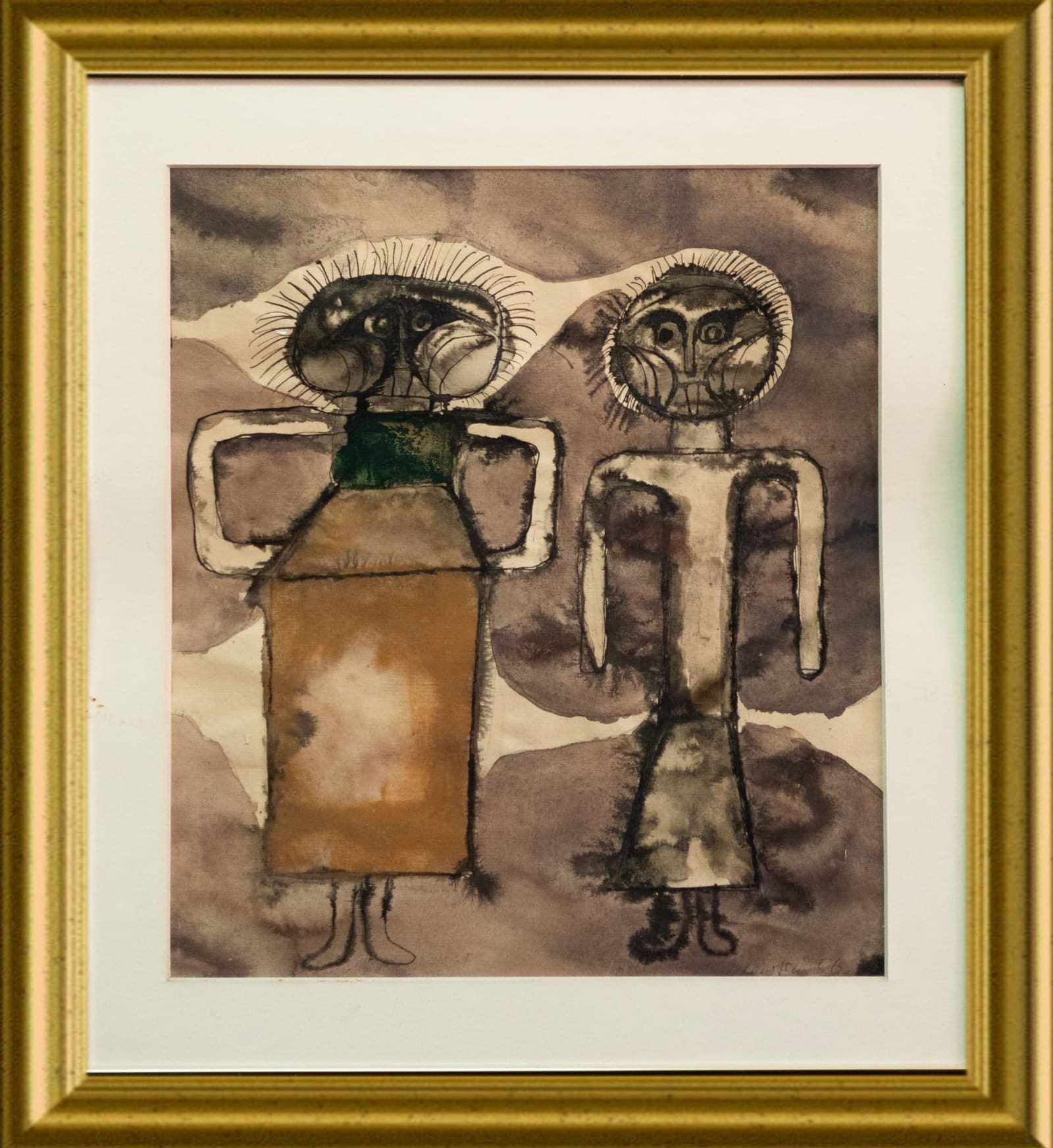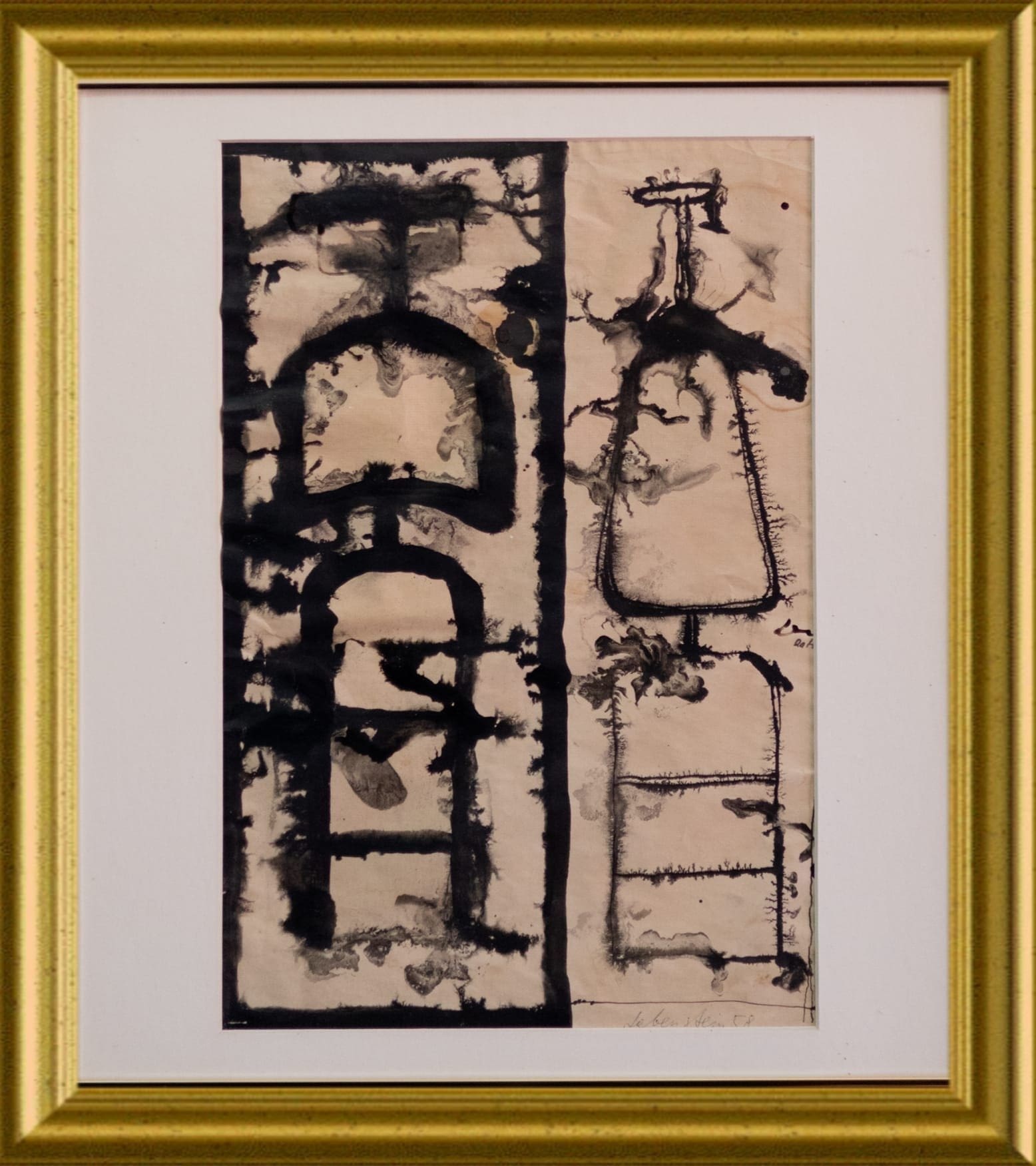Featured Art
The prices presented below do not include shipping costs.
Yiddishland is in a process of setting up in a new location!
If you are interested in purchasing, please email us at
info@yiddishland.ca
Custom-shipping available for destinations outside the US. Please fill the form to get a personalized quote.
Please see the rest of our Virtual Gallery
Jan Lebenstein
Polish artist Jan Lebenstein drew inspiration from world culture and personal experiences, creating pieces that left a lasting impression. Born in Brest Litovsk in 1930, Lebenstein studied painting at Warsaw’s Academy of Fine Arts from 1948 to 1954.
In his early work, Lebenstein depicted his interactions with everyday reality in Warsaw through nostalgic landscapes, forming a distinct and independent creative style that earned him a prize from an exhibition jury—this period marked the emergence of his unique personal style, evident in his symbol-like human figures featured in a series of gouaches of modest interiors.
Lebenstein’s first solo exhibition occurred at the Tarczyńska Street Theatre, run by writer Miron Białoszewski in his Warsaw apartment. His drawings and painted compositions featured vertically oriented, highly simplified human figures, often resembling insect-like creatures. His deeply emotional and personal art style, full of existential fears and reflections, garnered the recognition of French critics, who awarded him the Grand Prix at the First International Biennale of Young Artists in Paris in 1959.
Lebenstein’s later work explored themes of human nature and anti-Fascist political dissent. A recurring motif in his work, the monster, reflected the despair, loneliness, and hopelessness brought by the Holocaust. He employed dramatic conventions of dark and rich colors to paint naturalistic and stylized subjects. Lebenstein believed that modern styles originated from ancient traditions and drew inspiration from the mythologies of ancient civilizations such as Assyria, Babylon, Egypt, Greece, and holy texts. This inspiration drove him to produce works that reflected an apocalyptic world vision. His “Zoology Lesson” series emphasized human sensuality’s biological and physiological foundations.
Lebenstein’s main artistic mediums included gouache, tempera, and oil painting. He was known for his rich layers of oil paint, manneristic lines, and the unsettled atmosphere created by his gouache brush strokes. In addition to painting, Lebenstein contributed illustrations to numerous literary works, including George Orwell’s “Animal Farm” (1974), the Book of Job (1979), the Apocalypse (1983), and the Book of Genesis (1995). Posthumously, his work has gained global appreciation and is currently displayed in the Museum of Modern Art (MoMA).
Following his only exhibition in Poland, he donated many works to the National Museum in Wroclaw and actively participated in cultural movements. After many years, he received the Great Cross and Star of the Order of the Restoration of Poland from the President of Poland and an official state prize from the Minister of Culture and Art.
The largest official exhibition of Lebenstein in Poland, a retrospective, was held in 1992 at Warsaw’s Zachęta Gallery, very late in the artist’s career. His creative path and achievements were finally summarized in an “Etapy / Stages” exhibition in Paris and several Polish cities in the year preceding his death.
Daria Maksymenko
Art Gallery Assistant Intern




